Whistory
Police whistles are gaining in popularity and much attention is given to tube shaped Metropolitan Police whistles in particular. Deservedly so, as they have been categorized well, being numbered MP1-MP25 ( Gilchrist ) and with variations can be quite engaging to the collector.
Explanation of the Organized Police Whistles in Gilchrist’s Book CPWs.
However, information is wanting in the police whistles surrounding the Metropolitans, other models like escargots and here is an effort to bring into focus that discussion. Martin Gilchrist has done an excellent groundwork explanation along with Simon Topman in Collecting Police Whistles and Similar Types for tube shapes whistles.
Differences in Police Whistles and Generic Whistles Merely Used by the Police
What is a police whistle? Does any whistle qualify? Does it matter? For the student of whistles, it does. For example, a policeman may wear a sweatshirt, but does that make it a police sweatshirt ? Now what if the name of the department is stamped on the back and it is issued as police wear?
Then again, what if a local sports wear shop made their own with a police department stamped on them ( allowing they are not sued by the police force ).
Whistle Classification
| Category | tube escargot beaufort/conical button |
| Order | Hudson unknown Dowler Barrall Walton |
| Type | Police |
| Class | nickel silver nickel silver plated brass nickel plated brass brass |
| Subclass | engraved |
Whistle Archeology
Usage of Police Whistles
These are the different scenarios that occur with whistles where they might be used by police:
- Generic citizen purchased – plain, unmarked or even marked for a different reason, like sports.
- Genuine police issue – ordered and stamped with the force, from the factory.
- All purpose — such as police/fire so as to be marketed for either or even both
- Distributers – names forces such as Liverpool accompanied with distributer name.
- Engraved – special ordered, then stamp engraved after purchase
- Replicas – named but not ordered and issued by a force
Police Whistles Stamped by the Manufacturer
So then, for research purposes we will be restricting the view of police whistles to those that have the following on the stamp —- from the manufacturer.
- Metropolitan Police ( at first London, then merely coupled with specific forces )
- Constabulary
- City
- County
- Burgh
- Borough
Typically these whistles were not available to the public and in the UK. These kinds of stamps are rarely found in other country’s police forces.
Whistles for the General Police Market
In addition, there are associated titles aimed at the general police market, but not as customized, such as:
- police special
- police – fire
- Municipal police
- City police
- police whistle
- signal police
- traffic
- police
- city police
These were available to the public, yet could be said to be police whistles (technically). For the collector, they would still fall short between police, associated police and general service whistles (GSWs).
(Research is mostly limited to the UK in this article and similar stamps of equivalent and serving simply as a benchmark to be transferred to other languages and countries.)
What we want to accomplish is to weed out any whistles not directly indicative of an actual police issue. In other words, removing all whistles that — could have been used by a policeman, but not actually issued and stamped for a force in particular.
Police Whistles Restricted and Issued for a Particular Police Force OR Sold as a Promotional Whistle?
This is the question. In other words, could anyone buy them over the counter? Earliest records indicate different types of whistles for police issue and included:
- short beaufort shaped
- buttons
- beauforts ( conical )
- rounds
- tube shaped
- escargots
- bullets ( Argentina )
- combination of escargot/beaufort ( Hiatt patent )
- double escargot ( Polish )
- square ( Argentina )
Types of Whistles Not Seen in Use as Police Whistles
Interestingly, we have not seen pewter, bosun, multi chamber, sirens issued for police forces.
Why consider this as a separate topic? For the student/collector who actually drives this arena, for the researcher who endeavors to categorize and not least of all for the seller who wants to aim his/her whistle towards the right market, this all becomes important.
Some Observations to Consider are as Follows Regarding Police Whistles
How rare is the stamp? Did the manufacturer stay in business long and produce many?
What condition is the whistle in? How large was the police force and how long did it last? Can the whistle be dated by that? How old is the vintage and construction?
How unique is the design of the whistle? Metropolitan tube-shaped whistles are far more common than Hiatt combination whistles which are quite rare.
Prices are rising in the police whistle market, fueled mainly by the UK and the many changes of constabularies dating back to 1800. However, German issues are very collectable and certain other rarities from other countries like Argentina. At present the range is from a few dollars USD to close to 1500 dollars USD.
Police Whistles Distributors
Not a little confusing for everyone is the subject of distributors( as opposed to manufacturers )These were companies with product lines that had their name stamped on whistles along with either a police force — or without a force.
For the novice it would appear, that a given whistle was made by that named distributer — as a maker. They were not. We will show some examples to help separate this. Some distributors are as follows:
Harford, J.Reid, Kohler, Keane, Mitchell, Priest, Aird, Potts, Shaw, Reid, McFarlane, Dyke, Hobson, Simmons, Strand and the list goes on and usually is seen on beauforts, rounds and tube shaped, but could also be found on other whistles. When you see names like these, then you know who ordered and distributed the whistle, but it was made by someone else.
***Beyond this, some had their name stamped on the whistle as ‘maker’ — when they weren’t the ‘maker’. They were a maker of products and were advertising such on the whistle (See SPOTLIGHT #92)
Whistology
So, let’s examine some types and make some comparisons.
First, a smaller beaufort type whistle, more of the round whistle class. Pictured here for comparison only. This type has been seen with stamps for police and distributors. ( i.e. Durham Police or Hiatt distributor ) These types date back to very early 1800s as do the button whistles of varying custom and handmade designs
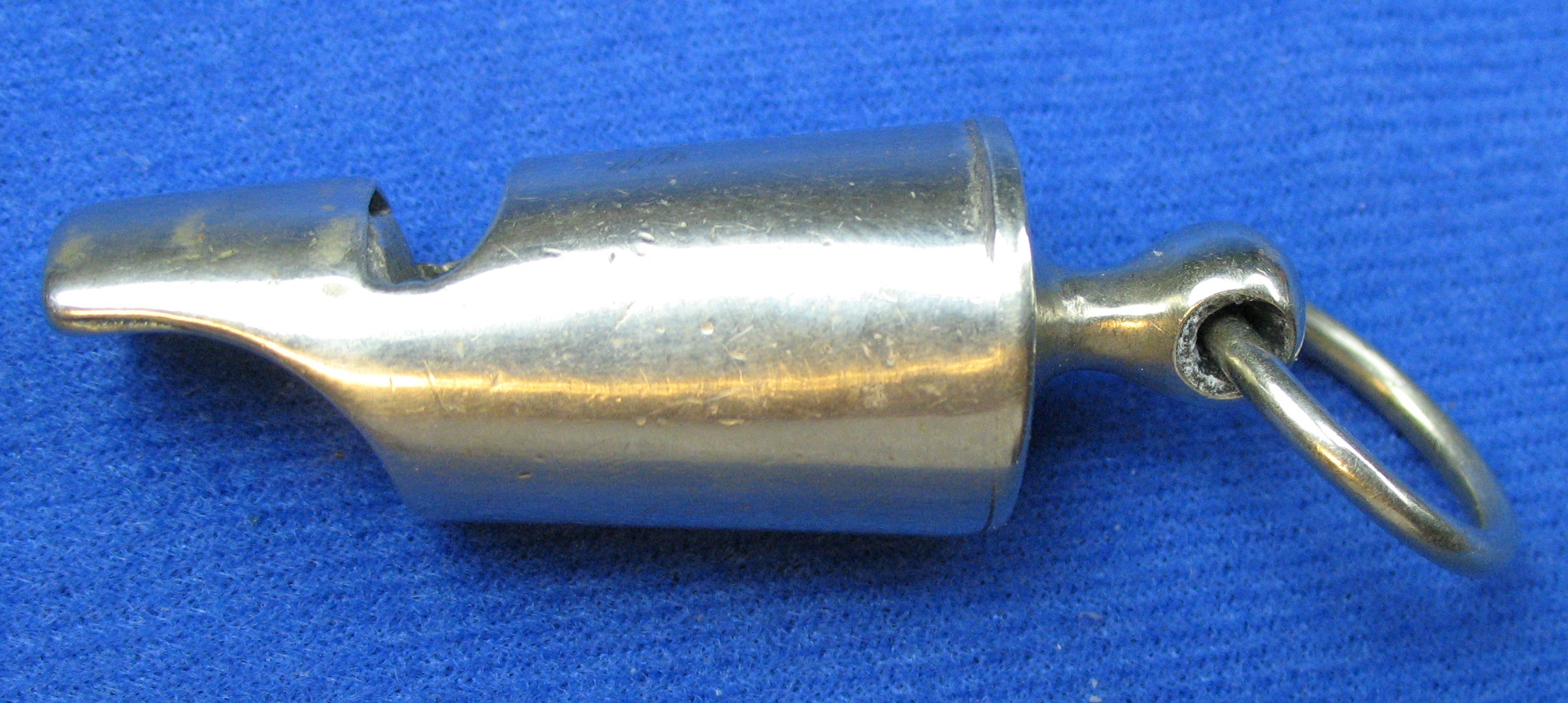
A button whistle made for the Denbigshire force:
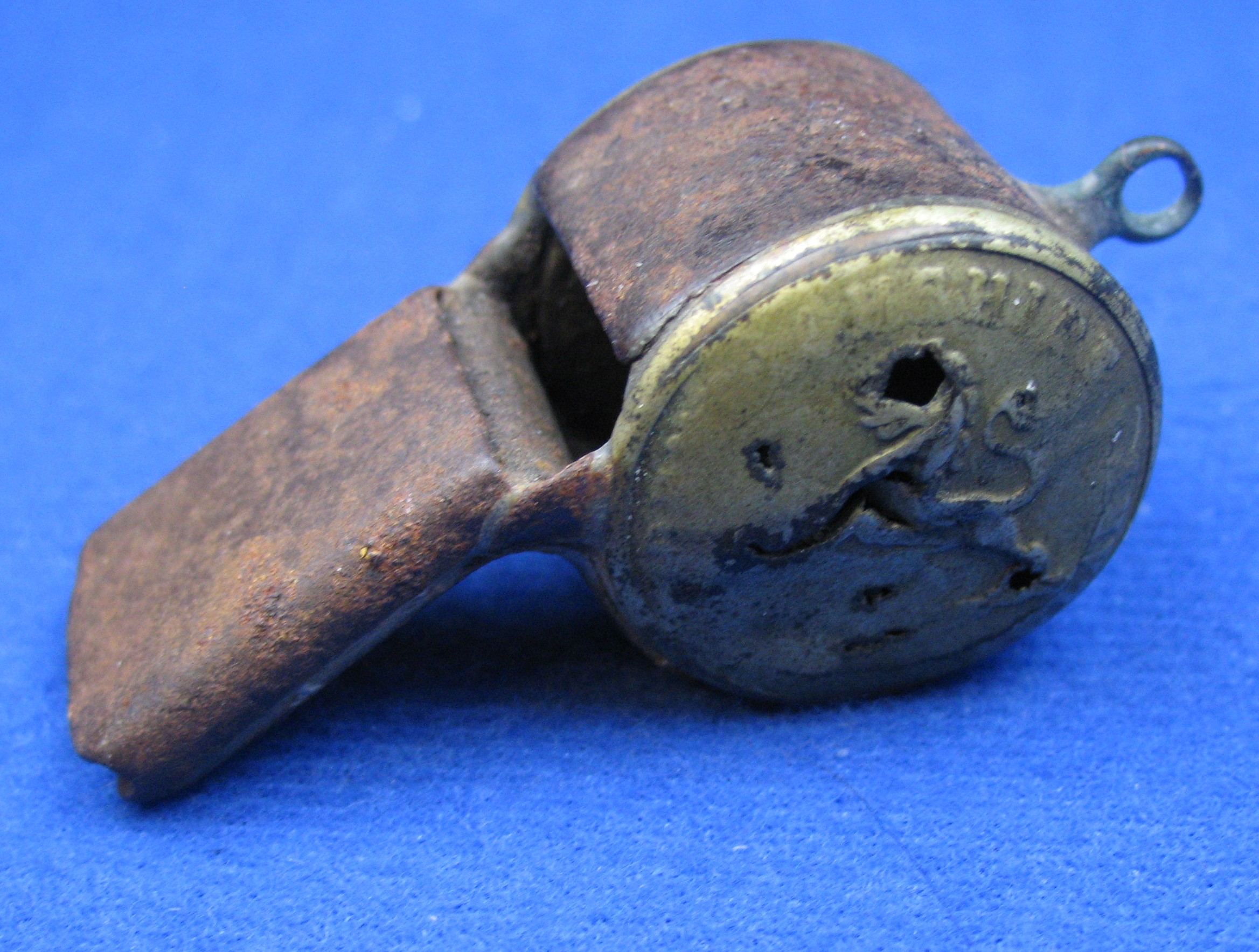
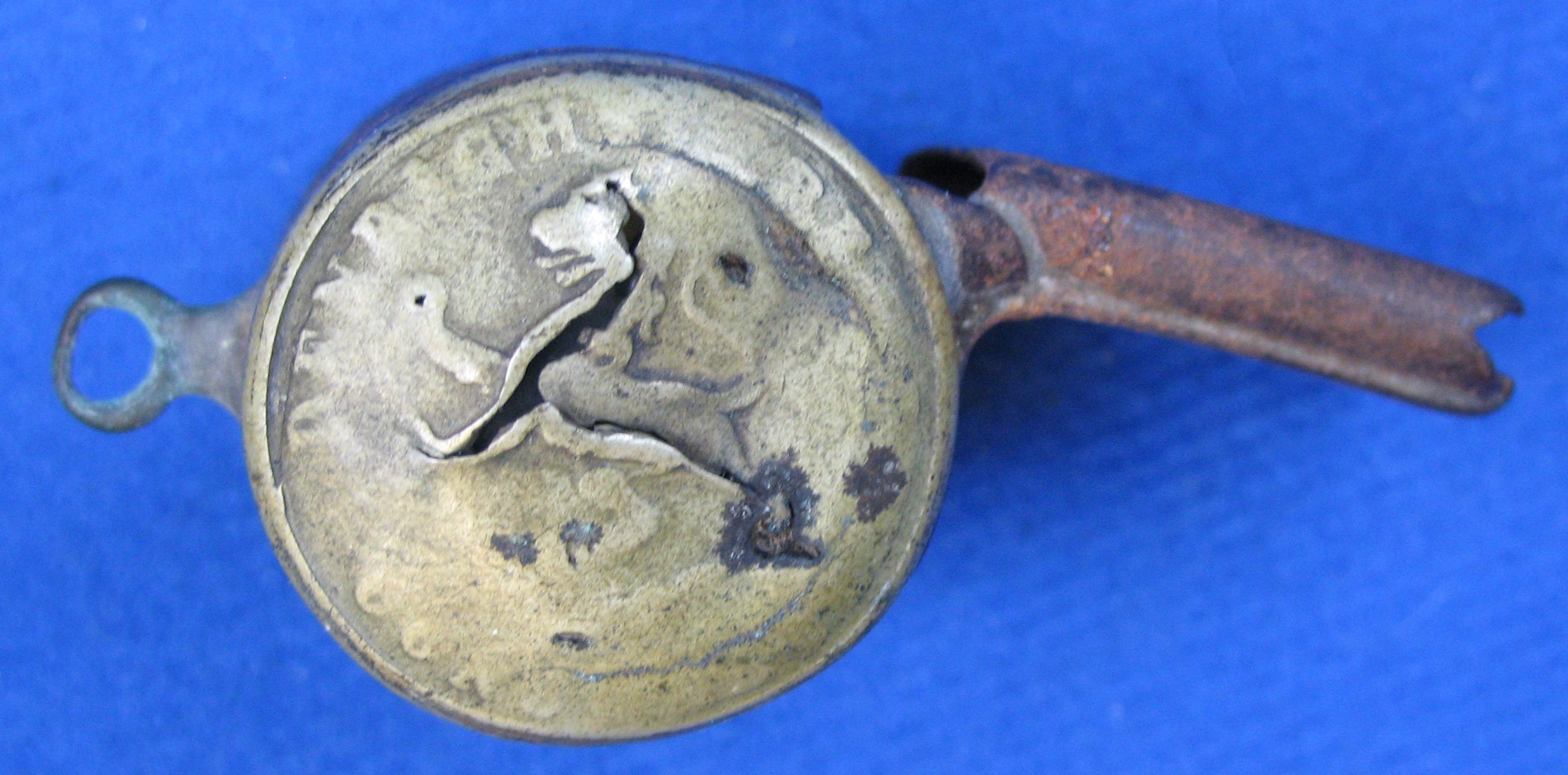
Typically, the buttons were taken from the clothes of that particular uniform and formed into a whistle. It was a very rustic ( literally ) way to make them. Police stamped buttons are rare as most button whistles were for military or livery.
Many forces used for years — with mouthpieces and without —- the beaufort whistle…
The Liverpool beaufort was the longest lasting of all police issue beauforts and this one is by DeCourcy next to a Dowler Lancashire County.

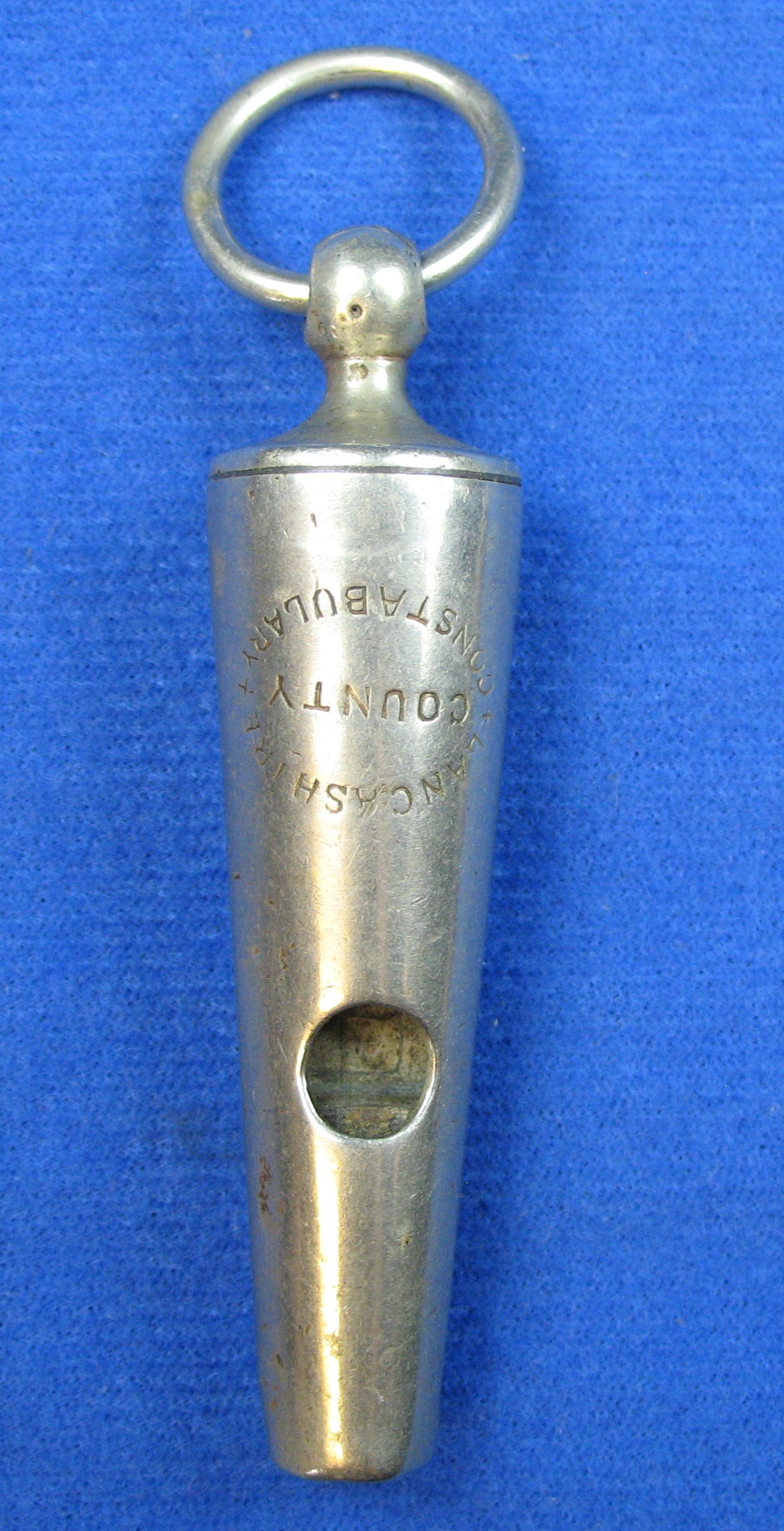
A Lincolnshire Constabulary with mouthpiece by Hudson:

For a discussion of police forces and distributor stamps and the overlap of such please see the breakdown of this under Metropolitan versus GSWs below…
Round Whistles
Let’s switch to round whistles in progression. In researching this we have not found typically rounds with police force stamps. Although very early police forces did use round whistles, they typically did not stamp any forces on them. Recently a DeCourcy manufactured round surfaced but it is the exception.
Tube Shaped Whistles
For the largest category in police whistles: tube shaped police issues…
(A comprehensive discussion of Metropolitan Police whistles by Hudson is seen in SPOTLIGHT #13)
- Does the whistle have METROPOLITAN on it? – then it is a general service whistle at this point.
- Does it have a police force on it too? ——- then it is a police issue
- Does it lack a police force, yet have a distributor on it?– then it is a general service whistle
- Does it have METROPOLITAN, a distributor AND a police force on it?– then it is a police issue




- general service whistle (for sale to the public)
- police issue (not for sale to the public)
- general service with public distributors name (for sale to the public)
- police issue with police distributors name also (not for sale to the public)
If a whistle says Metropolitan on it you do not automatically assume it is a police whistle. Granted the name has become synonymous, but that is a general misconception. Now you will see occasionally police type( referring to the tube shaped design ) and of course that would be accurate, but still a little confusing, as it is a ‘type’ and not an actual police issue.
Now, how does this apply to other manufacturers? There were other whistle makers that also supplied police whistles and were contracted for the different forces including:
Barrall, Dowler, DeCourcy, Bent & Parker, Yates? others?
(Walton came close, but never specified, nor restricted his to a particular force that we have seen.)
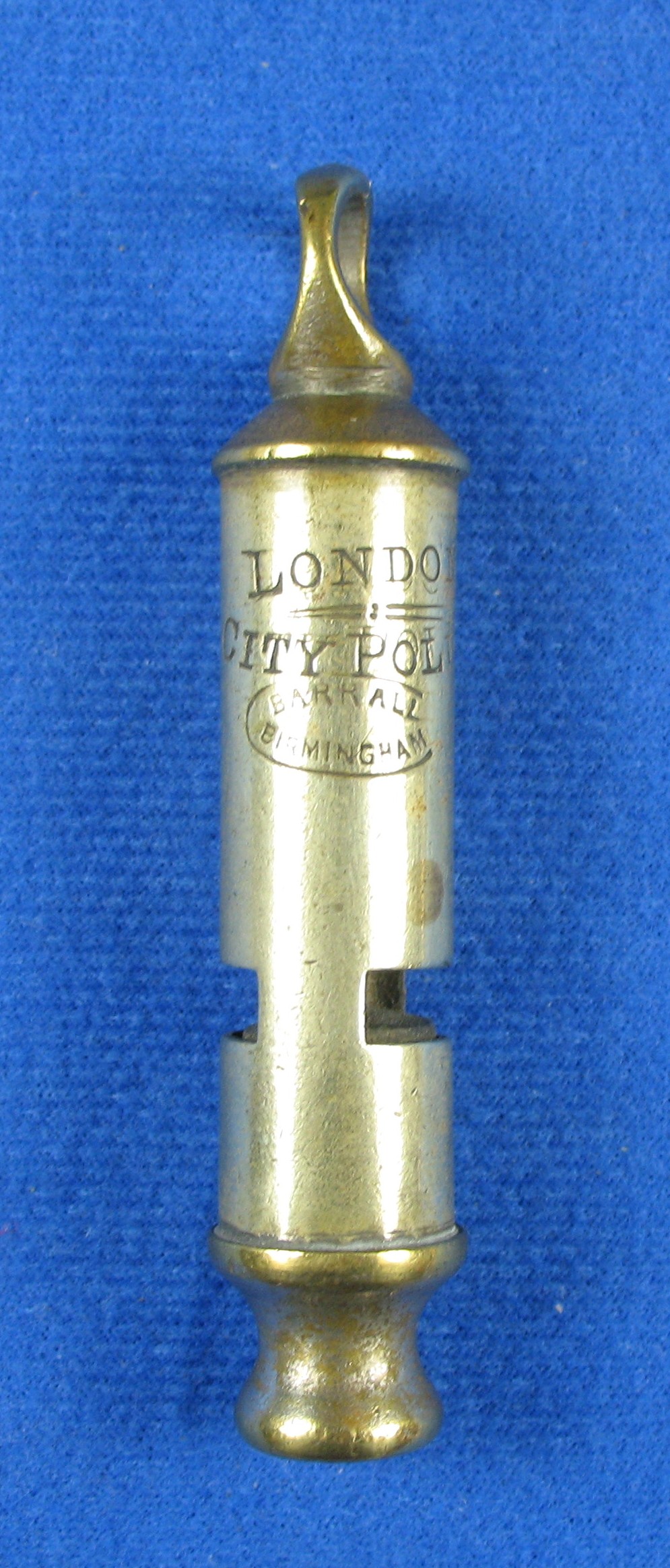
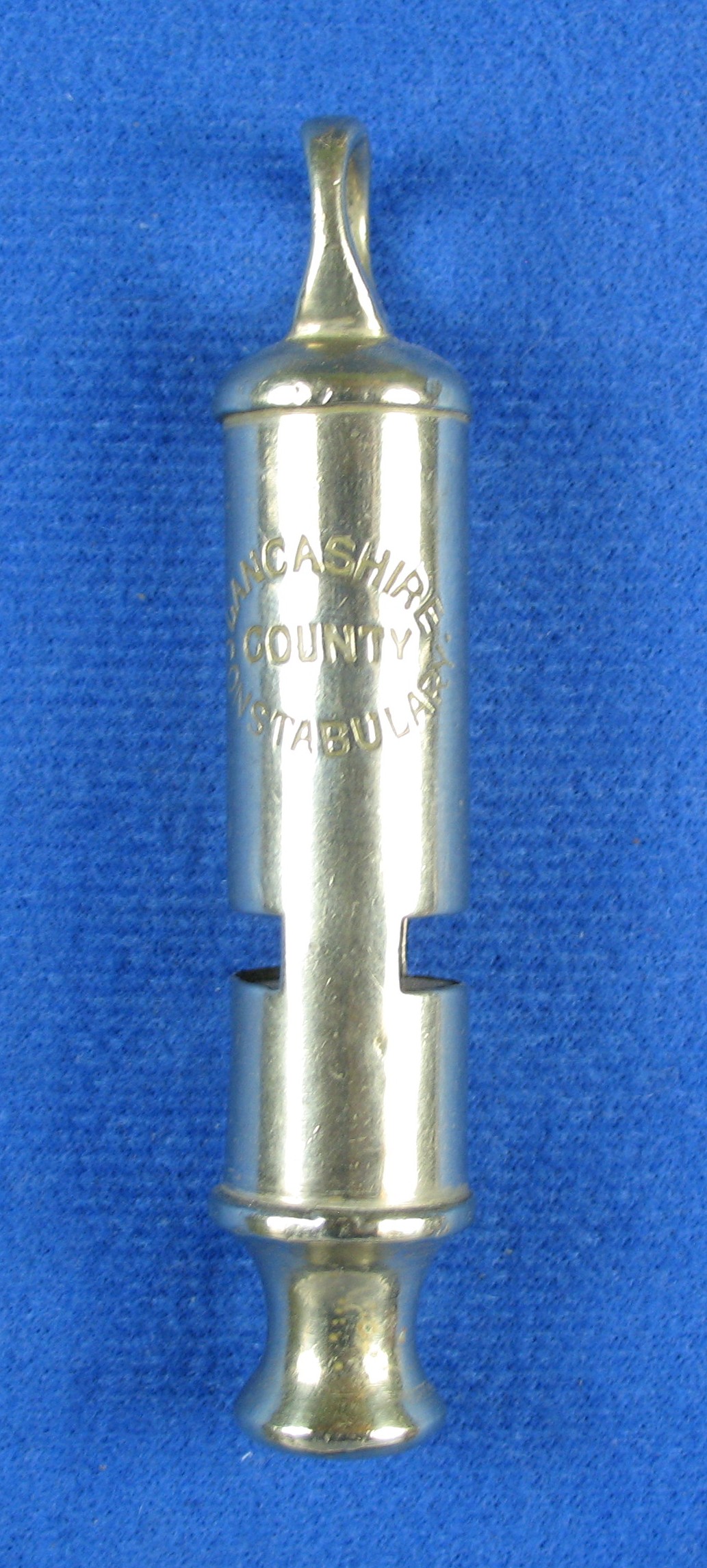
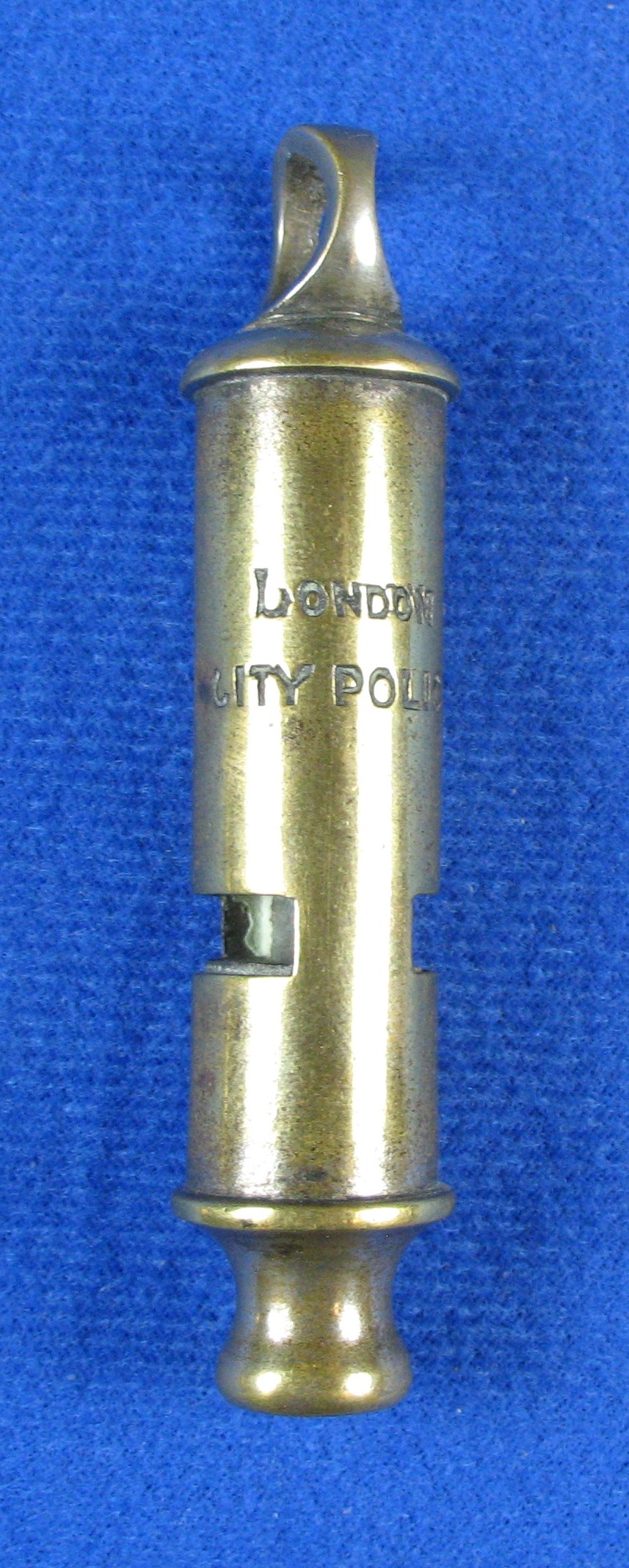

- Barrall
- Dowler
- DeCourcy
- Bent and Parker
Police Whistles by Country
Each country can use these same principles. – Who was the whistle made for >> the police only or the public too? Specialized or ‘promotional’?
Argentina used police and federal enforcement issues, but how restricted were they? No records have been accessed to know at present. However, there were marked and unmarked issues. Here is a whistle typically seen in Argentina manufactured in the UK, Germany, Argentina and perhaps France?


Here is an example of an escargot dedicated to Staffordshire and then a unique design to the Polish Citizens Militia – state police of the 1950s.
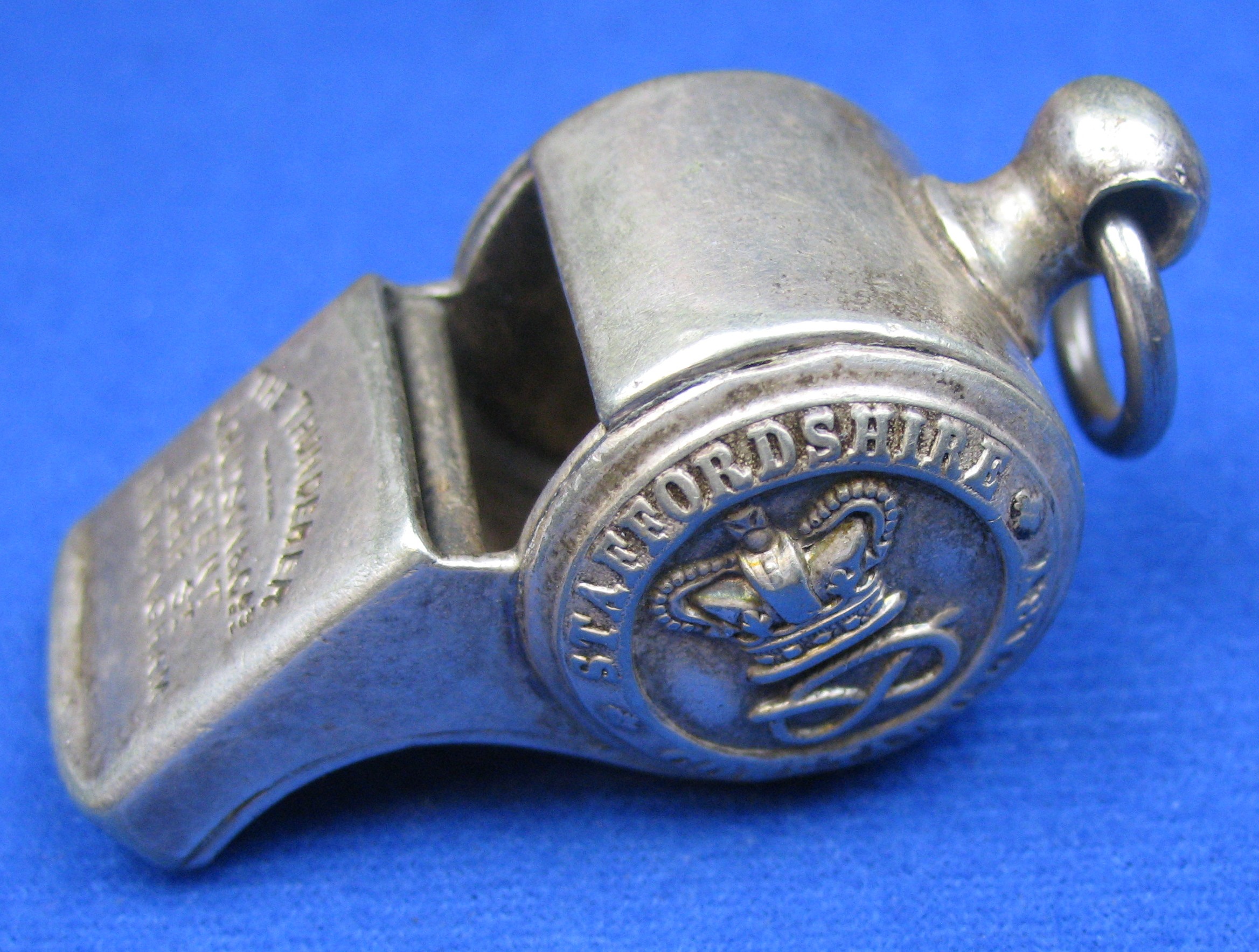
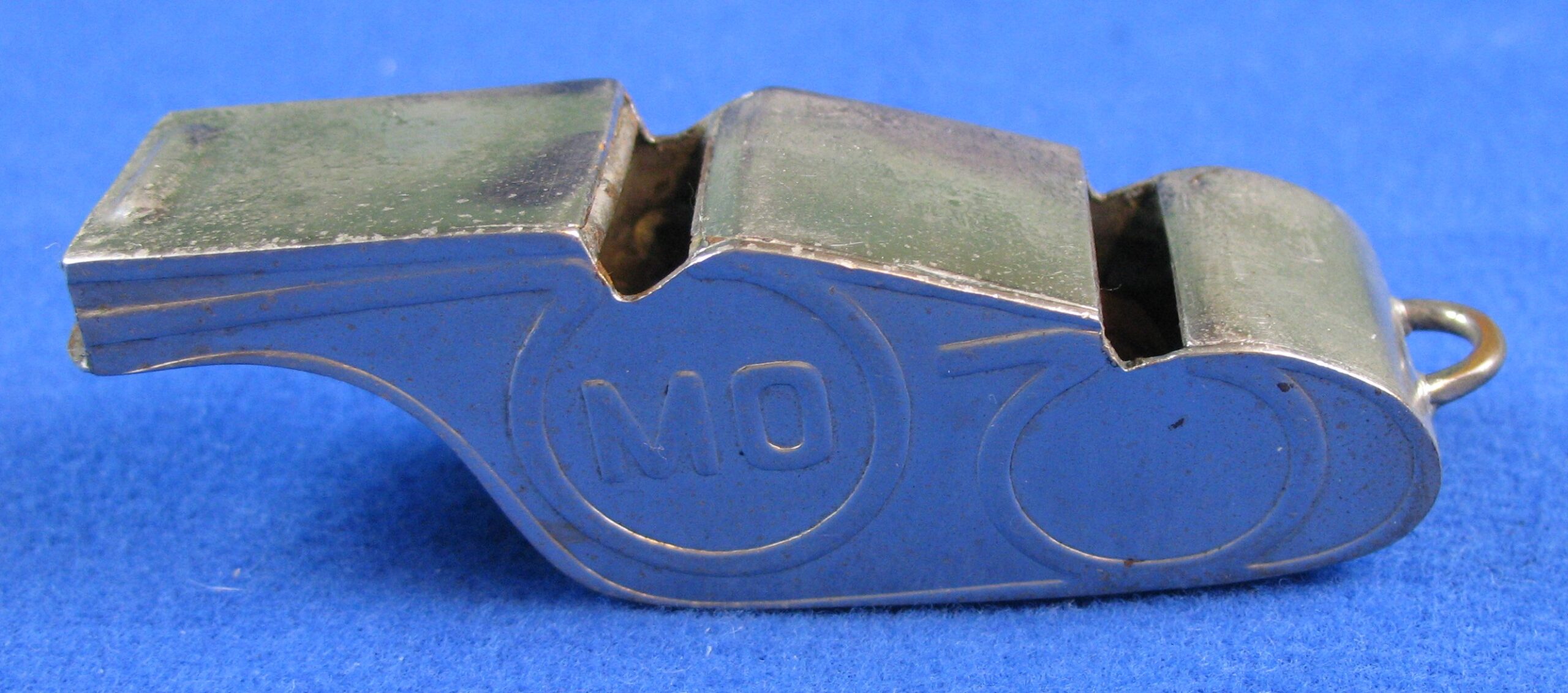
Now let’s discuss the second most confusing topic (whistles with the WORD “police” on the stamp)
As mentioned above, many stamps have been arranged so as to try to capture the public market and also the police market, neither of which ordering was contracted by any specific police force. Listed above such as police/fire or police special for example, they could be bought and used by anyone—police or not.
So, to call such a whistle a ‘police whistle’ would literally be accurate. However to the collector ( and the seller ) it becomes important to recognize the difference.
Examples:
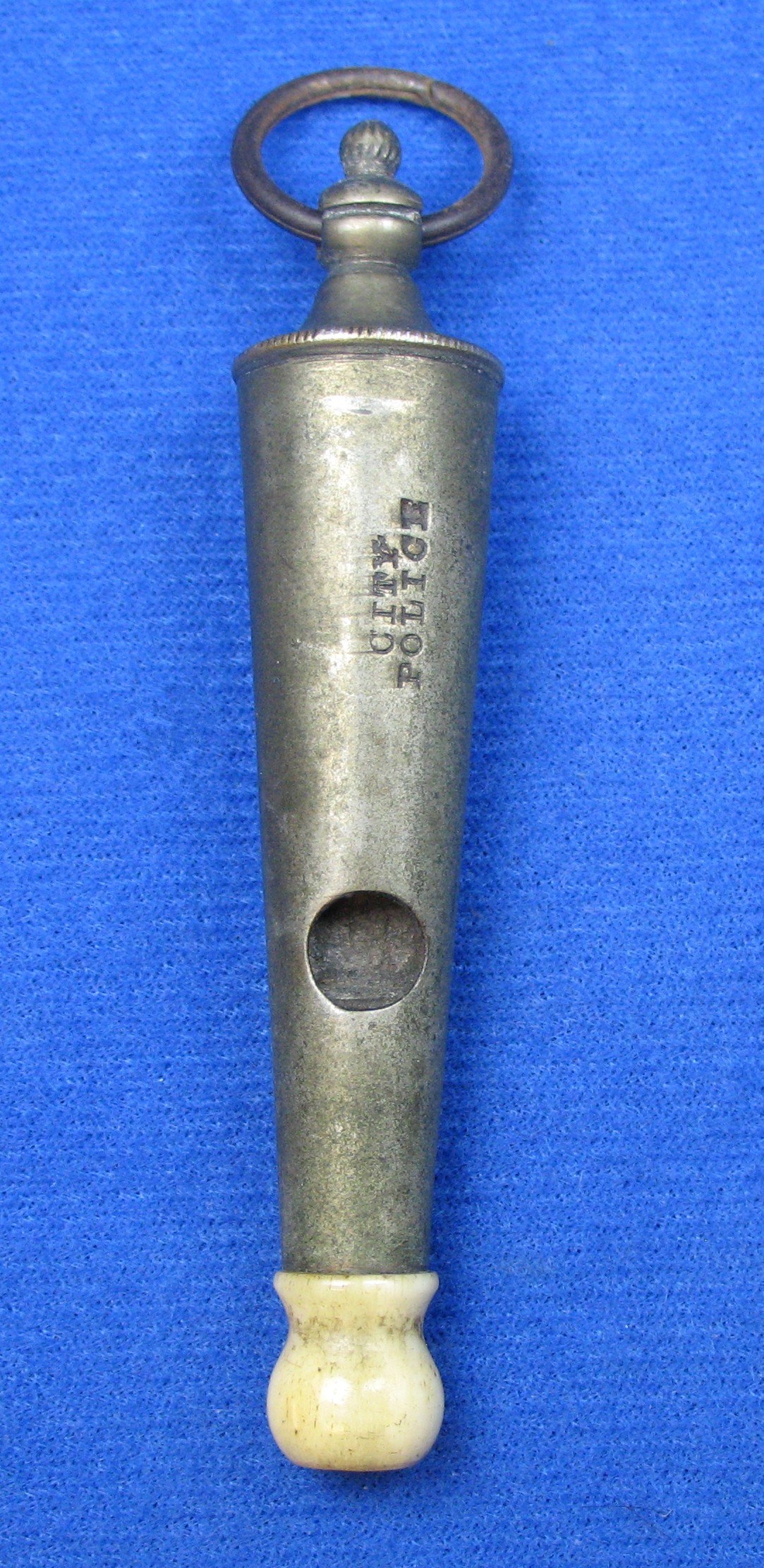

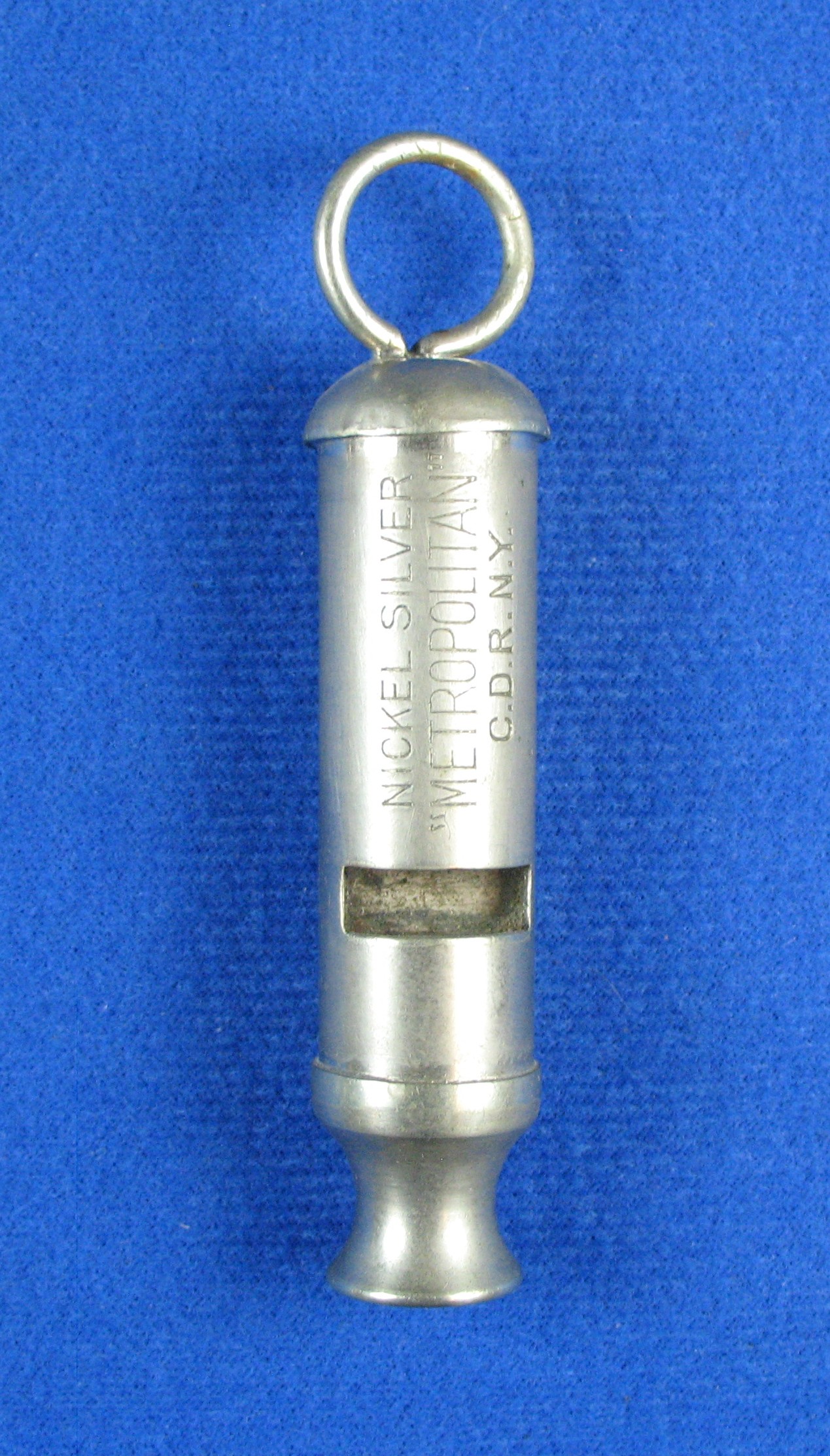
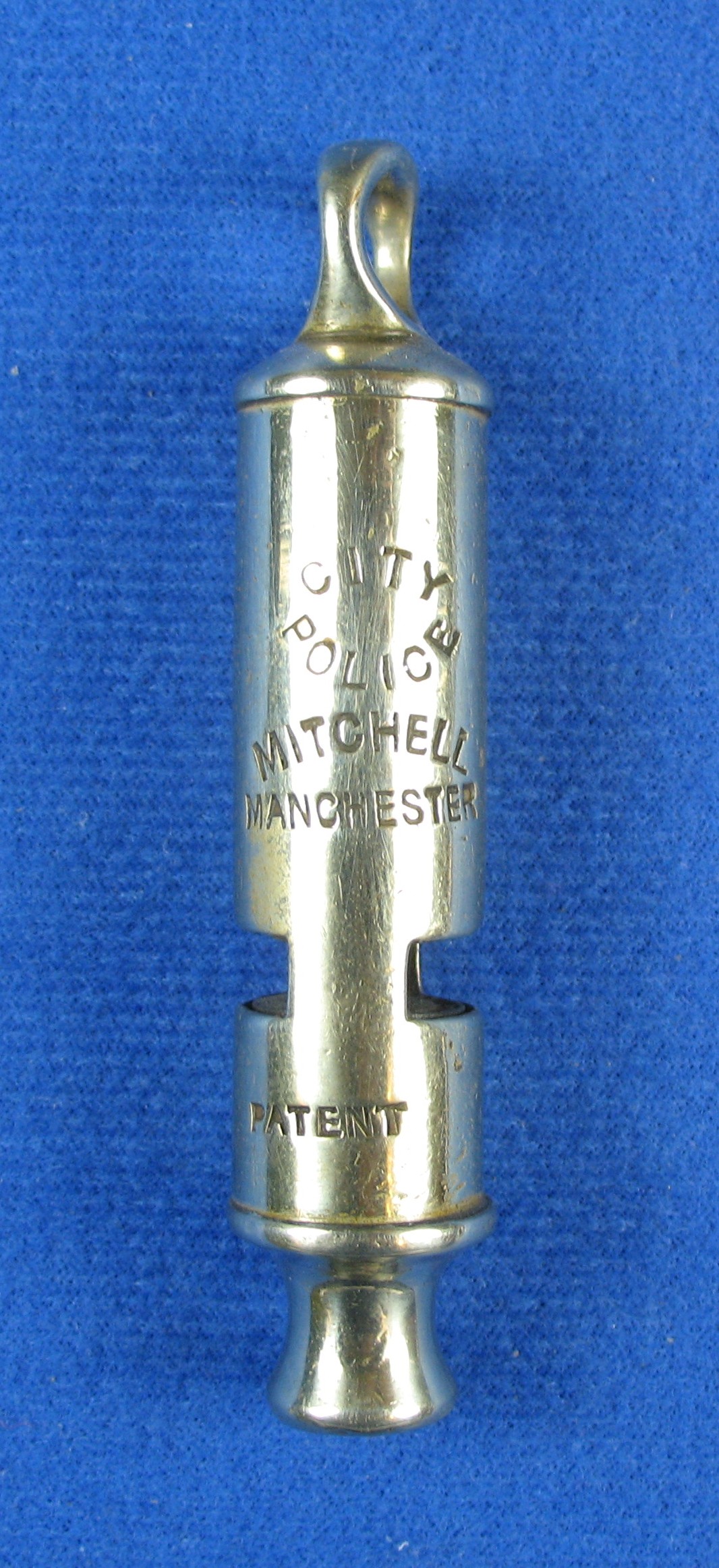
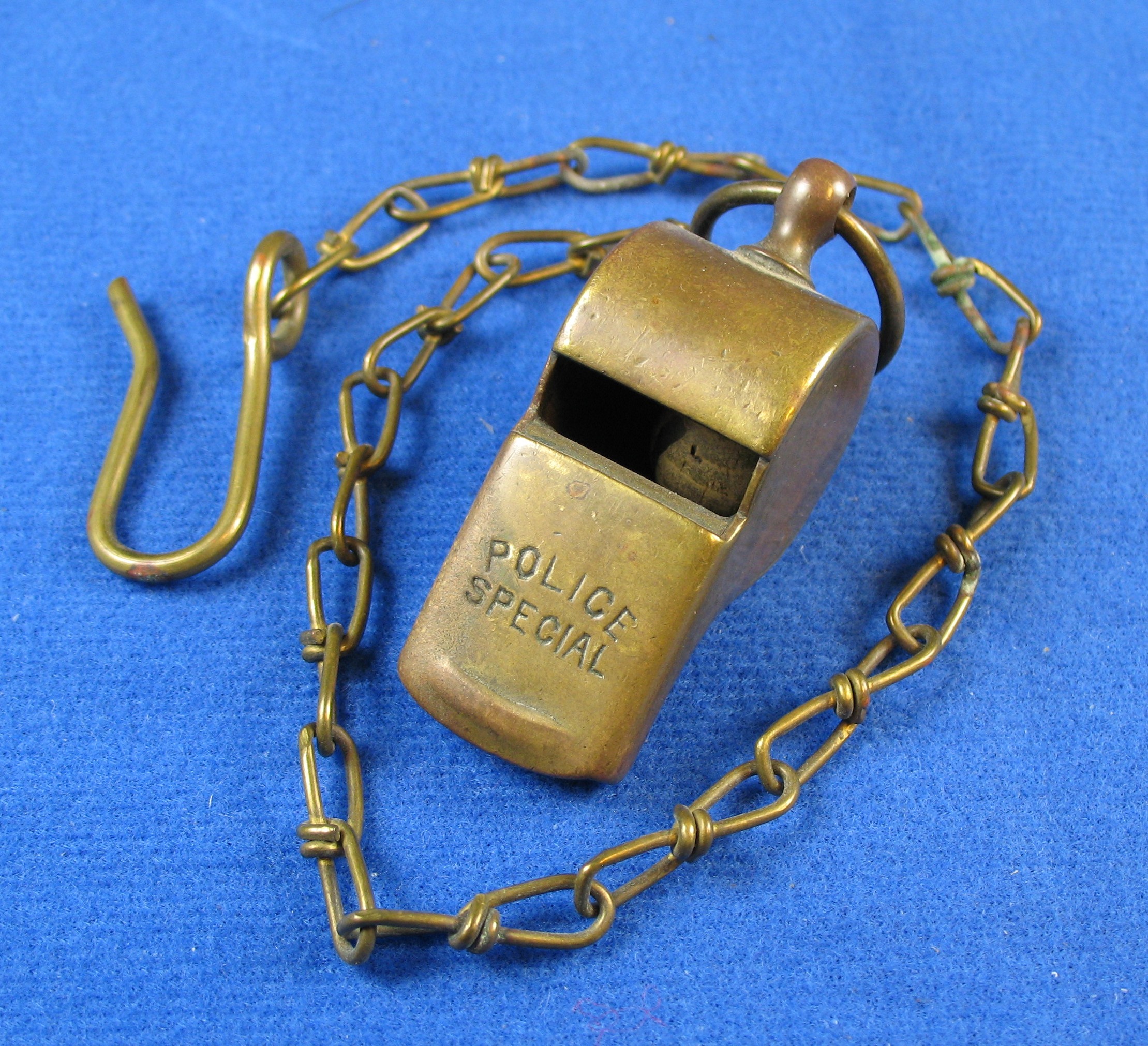
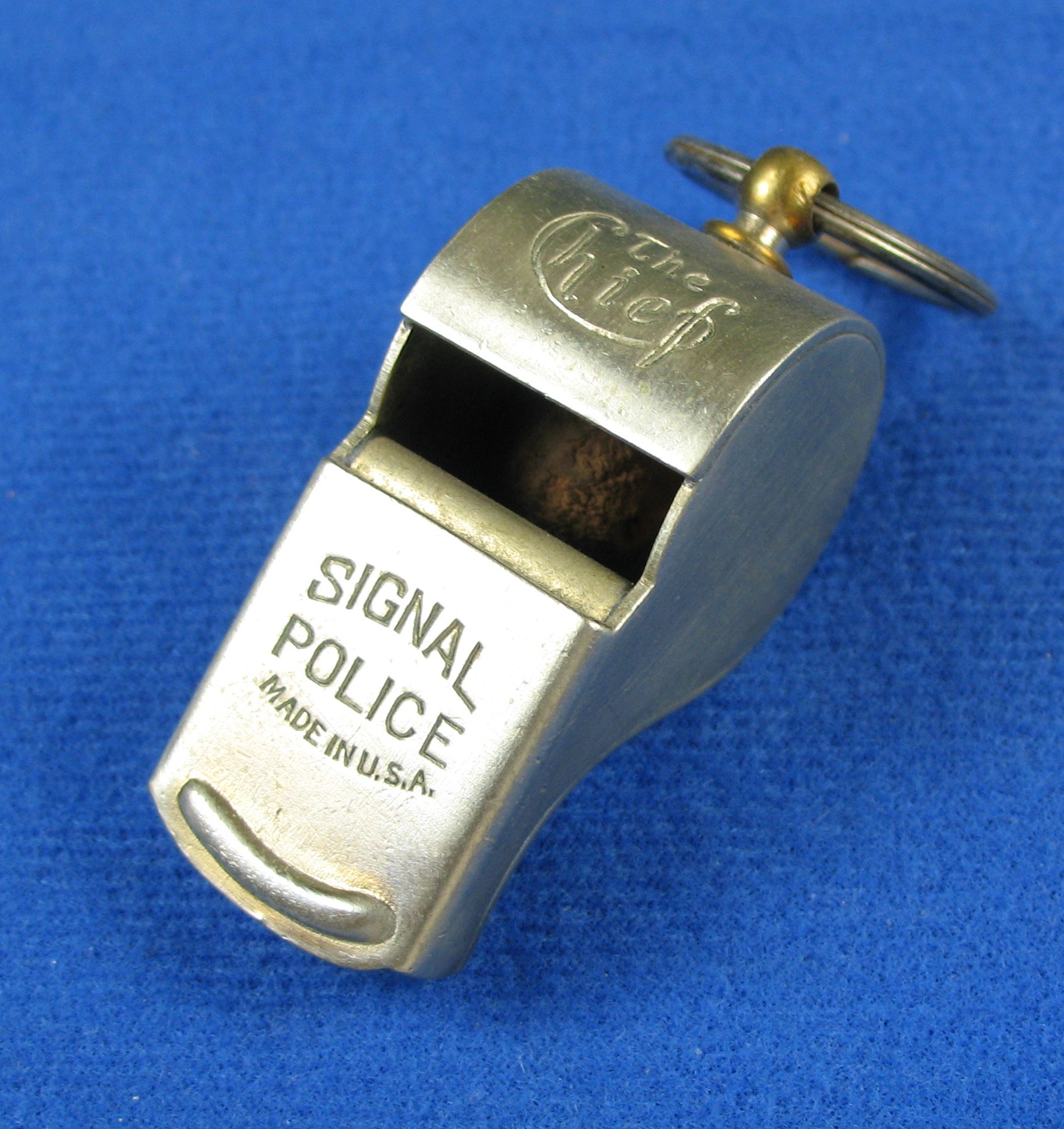
What about exceptions to the rule? What about presentation whistles? Or special issues. Or engraving afterwards.
You will have to decide. These are just some guidelines to unravel some of the confusion and perhaps further the benchmark that Martyn Gilchrist and Simon Topman so well established in his milestone book Collecting Police Whistles and Similar Types.
Conclusions
Detecting police whistles takes sleuthing, but with these guidelines it can easily be done, if not then write us. ?
TWG
Posted August 5, 2014
Revised September 15, 2020
Revised October 11, 2020
Revised February 12, 2021
Revised December 31, 2021
Revised September 5, 2022
Bibliography
Collecting Police Whistles and Similar Types by Martyn Gilchrist and Simon Topman 1998
The Whistle Gallery Reference Collection
© – All photos with blue background property of The Whistle Gallery reference collection. Please contact The Whistle Gallery for permission of use of any website content. Spotlight articles are copyrighted. Please contact The Whistle Gallery for permission of use of any website or Spotlight article material written or otherwise. Use of photos without authorization is prohibited.
Where to Learn More:
Spotlight > By Whistle Category > Police Whistle Articles
Spotlight > Whistle Maker by Country of Origin > United Kingdom > Hudson
Spotlight > Whistle Maker by Country of Origin > United Kingdom > Dowler
Spotlight > Whistle Maker by Country of Origin > United Kingdom > Barrall
Spotlight > Whistle Maker by Country of Origin > United Kingdom > Walton










